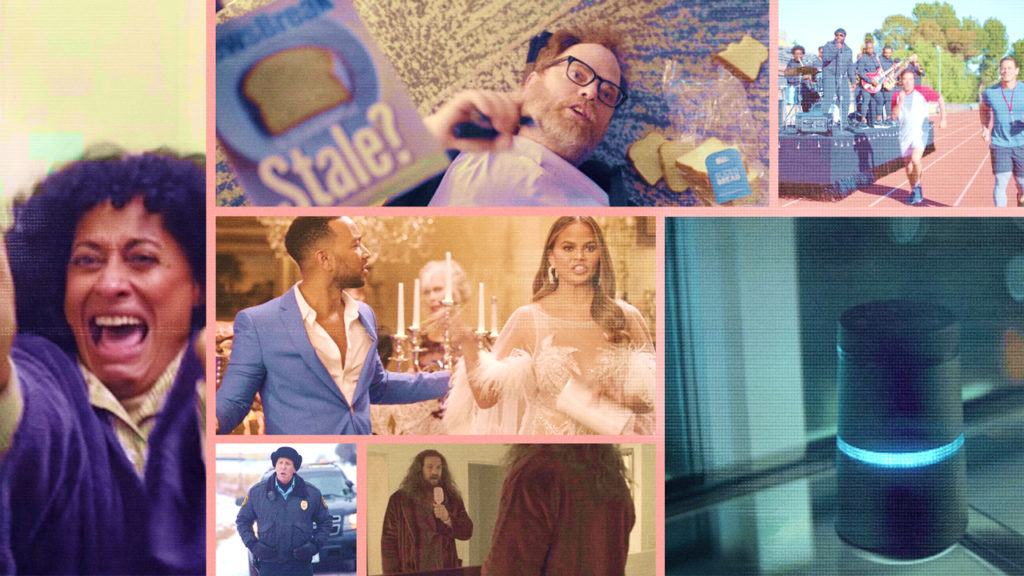Originally published on ION.
(Editor’s note: AList is published by a.network. To get up to speed on the rapid changes affecting the influencer marketing landscape, click here.)
Celebrities have long been the stars of Super Bowl ads. This year, however, many brands opted for influencers. Sabra included cast members from The Real Housewives of New Jerseyand from RuPaul’s Drag Race in its teasers. Comedian Lilly Singh played a part in Olay’s purpose-driven #MakeSpaceForWomen ad campaign. And Pop-Tarts promoted its new pretzel Pop-Tart with a game day teaser featuring the Queer Eye’s Jonathan Van Ness. We explore how brands incorporated influencers into their Super Bowl activations and the pros and cons of doing so.
Hummus brand Sabra used an unexpected cast for its first Super Bowl ad, teasers for which include The Real Housewives of New Jersey foes Teresa Giudice and Caroline Manzo, T-Pain and RuPaul Drag Race contestants Miz Cracker and Kim Chi. Colorful characters may demonstrate the brand’s messaging—the versatility of hummus—but will Sabra’s choice of influencer resonate with its audience?
“In order to maximize ROI, brands should try to appeal to as broad an audience as possible during the Super Bowl. However, a downside of influencers is that they often appeal to a niche audience. As we’ve seen with some of the teasers so far, influencers and their quirks aren’t always common knowledge and therefore can be misunderstood among a general audience,” says Peter Daboll, CEO of Ace Metrix.
To cover all bases, Sabra also extended its Super Bowl activations to social media via over a dozen nano- and micro-influencers. Lifestyle blogger Erika James Carder and professional triathlete Rebecca Wassner, who both respectively have about 12,000 followers, posted Instagram photos of themselves holding or eating Sabra hummus, referring to it as the “MVD,” or most valuable dip. Also on Instagram, mom and travel blogger Danielle Greco, who has 19,000 followers, showed her and her son’s favorite way of snacking with Sabra. All three Sabra partners’ captions mention the brand’s “DIP. WATCH. WIN.” sweepstakes, which will award five $100,000 prizes and a “riDIPulous” amount of free hummus. To enter, fans who buy specially marked packages of Sabra’s hummus flavors can scan a quick response code to unlock game pieces, with the winning combination revealed during Sabra’s Super Bowl spot.
“One advantage of working with an influencer is cost versus engagement. The authenticity and approachability of smaller influencers can really pay off. What they lack in reach compared to multi-million follower celebrities they more than make up for in engagement,” says Yuval Ben-Itzhak, CEO of Socialbakers.
Socialbakers data shows that influencer sponsored ads grew by more than 150 percent in the last year, while the use of #ad (sponsored social ads) more than doubled. Ben-Itzhak adds, “Since brands are seeing compelling results from working with influencers, it’s not surprising that we are seeing the same evolution with these all-important Super Bowl ads.”
Like most beauty brands, Procter & Gamble’s Olay has made influencers a regular part of its marketing. In 2018, the company launched its “Face Anything” campaign with a message of being true to yourself. Driving the message home was a 10-page Vogue spread featuring YouTube star and comedian Lilly Singh and eight others, as well as Instagram content created by influencers like plus-size model Hunter McGrady, who detailed her 28-day Olay skincare routine.
This year, Olay invited Lilly Singh to be in its Super Bowl ad where she portrays an astronaut alongside Busy Philipps, Nicole Stott, Taraji P. Henson and Katie Couric. The appeal of including Singh in Olay’s Super Bowl ad is that she has 15 million YouTube subscribers and 9 million Instagram followers. Additionally, the influencer will host her own late night show, A Little Late with Lilly Singh, premiering this fall on NBC.
Kellogg’s too, has taken the influencer route for game day. A teaser of what’s to come in its Pop-Tarts Super Bowl spot shows Queer Eye’s Jonathan Van Ness freaking out over the snack selection on set, complaining they’re all dry, boring options. On why Kellogg’s used Van Ness to promote its new pretzel-flavored snack, the brand’s senior director of marketing Phil Schaffer said in a press release, “When it comes to ‘bringing out your best,’ nobody does it better than Jonathan Van Ness–so it was only natural for Pop-Tarts to enlist him to help ‘fix’ the classic pretzel and introduce Pop-Tarts Pretzel. Already a loyal brand advocate, Jonathan’s upbeat personality is a natural fit to help Pop-Tarts unveil our latest craveable flavors.”
When you think Pop-Tarts spokesperson, Van Ness may not immediately come to mind, but the grooming expert’s personality and role on Queer Eye align with the sweet-salty dichotomy that Pop-Tart’s new pretzel snack embodies.
Regardless of who you use for a campaign, it’s really about staying on message. “It’s not necessarily celebrity versus influencer that will impact ad performance. The key is how tightly the spokesperson fits into the storyline,” Daboll says.


